by Shari Finnell, editor, Not-for-Profit News
This article is the first in a series of perspectives on how to achieve racial equity locally, nationally and globally. If you would like to submit your nonprofit’s racial justice initiative for possible publication in Not-for-Profit News, please contact Shari Finnell at shari@charitableadvisors.com.
“What’s next?” That’s the question on the agendas of many nonprofits in the wake of racial justice protests joined by as many as 26 million people throughout America in 2020. Here, the following five Central Indiana leaders give their perspectives on how to address that question as part of efforts to achieve real change in our nation’s renewed quest for racial equity.
- Alan Bacon, senior director of Social Innovation for United Way of Central Indiana
- Ebony Chappell, manager of program and communications, Leadership Indianapolis
- Jill English, director of Child Advocates’ Interrupting Racism for Children
- Una Osili, associate dean for research and international programs at Indiana University Lilly Family School of Philanthropy
- Lindsey Rabinowitch, director of the Faith & Action Project for Christian Theological Seminary.
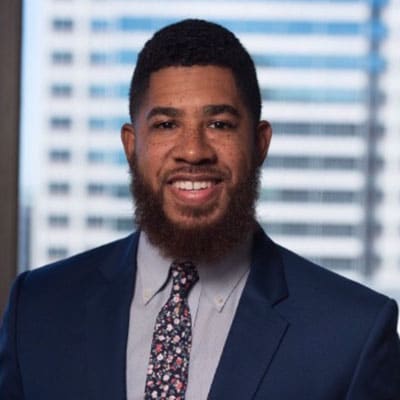
Alan Bacon, senior director of Social Innovation for United Way of Central Indiana
“We have a unique opportunity to do something about racial justice.”
With as many as 26 million people joining in Black Lives Matters protests nationwide in 2020, the United States could be poised for real change in achieving racial equity, according to Alan Bacon, senior director of social innovation for United Way of Central Indiana (UWCI).
“This is a large and significant moment for world history,” Bacon said. “We saw the entire world galvanize around the notion of racial equity. A lot of organizations are now asking, ‘What can we do to help?’.”
However, Bacon said, the moment could be lost unless there is an investment in the work required to eliminate systemic racism. “There’s a lot of work to be done to ensure that it’s not just a footnote to the history of 2020,” he said. “We have a unique opportunity to do something about racial justice.”
As organizations and individuals seek to increase awareness and implement policies to promote equity they must first step out of their comfort zones, Bacon said. “We need to challenge ourselves on our biases, and challenge ourselves to support each other,” he said. “There can be a great response when the community comes together.”
While the work will look different for every organization, Bacon said, there must be a challenge to seek innovative solutions — ones to replace those that haven’t worked in the past.
In his role at UWCI, Bacon supports organizations that are implementing new solutions for long-standing social challenges like multi-generational poverty. “Social innovation is about trying to find new innovative strategies, programs and initiatives to deploy in the community to help fight poverty and help residents experience upward mobility,” he said. We’re trying to figure out what are those new approaches to get a different result … social innovation that makes the most change and most impact.”
That approach also includes encouraging thought leadership, bringing groups together to talk about challenges and solutions, and accessing diverse thought in the community, “We look at innovation from a disruptive lens,” Bacon said. “We try to be as audacious as possible, understanding that, to move the needle, you must do things differently. At the same time, the initiative must be sustainable. There is a high-risk, high reward approach to dealing with innovation.”
Like an increasing number of organizations, the UWCI has invested in an alternative grant-making process for its new Social Innovation Fund. Bacon said it allows UWCI to make informed decisions when awarding grants to agencies that are bringing new ideas on how to address poverty.
“Organizations don’t have to be accredited with United Way to participate in the competitive-based process for funding,” Bacon said. “There’s not a large barrier of entry. If you have a 501c3 status, you can participate in the grantmaking for Social Innovation.” As a result, the pool of applicants for the first round of Social Innovation Fund grants had a good amount of diversity, Bacon said.
Of the 14 grants awarded in 2019, seven went to organizations led by people of color and six were awarded to organizations led by women, Bacon said. “We were able to achieve equity by being intentional on the front end,” he said. “We’re finding ways to implement equity in current processes and programming. We have done well in regard to grantmaking for Social Innovation.”
You Yes You! Project, which was among the first grant recipients of the Social Innovation Fund, demonstrates an innovative approach to targeting multi-generational poverty in Central Indiana, Bacon said. The nonprofit focuses on building healthy relationships between incarcerated fathers and their children through programming and education, a two-generation approach designed to break the cycle of poverty in the household.
Education is another critical area for organizations to address when implementing anti-racism policies and programs, Bacon said. It’s important to understand how racism has impacted housing development, food and transportation access, contributing to the issues that many people of color are now facing, he said.
“It’s important to move forward, but it’s also important to look back and understand the history of systemic racism,” Bacon said. “If not, we will eventually become complacent and not get anywhere. We need to inform with intent. This is not just a moment in American history. We need to ask, ‘How do we build a collection of moments to make real change within our country?”
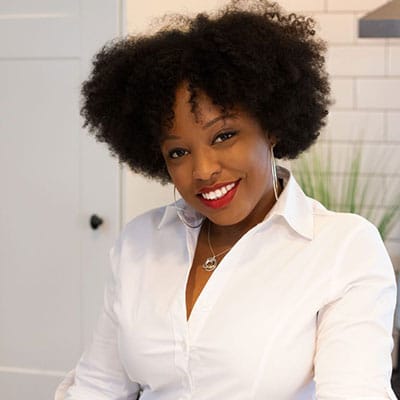
Ebony Chappel, program and communications manager, Leadership Indianapolis
Ebony Chappel of Leadership Indianapolis, recalls watching broadcasts in disbelief as protests for racial equity erupted nationwide in the wake of the death of George Floyd in May. “Initially, I was very emotional by all the things I was seeing on television and right here in my home city,” Chappel said. “The onslaught was so sudden. I went to sleep and when I woke up, it seemed as if the world was on fire.”
Yet, at the same time, Chappel said, the reality of systemic racism in America diminished some of her surprise. “The embers have been glowing for a long time,” Chappel said. “A deeper part of me wasn’t shocked. This was history taking its course … chicken coming home to roost.”
Referring to an analogy used by author Arundhati Roy to describe the 2020 pandemic, Chappel said mass protests can provide a portal for lasting change.
“When he referred to the pandemic as a portal, that stuck out to me so much,” Chappel said. “We also can use this time as an opportunity to implement real change with racial equity … as a portal to a different way of being. However, that depends upon our collective ability to shift and do something different.
“If everyone is focused on retaining the status quo, I personally believe it will lead to our ruin,” she said. “If we collectively decide this society is not equitable because so many people are disenfranchised, I believe it will change our world for the better, a world full of possibilities.”
Local nonprofits that are already implementing innovative strategies can serve as models for other organizations seeking direction, Chappel said.
“CICF (Central Indiana Community Foundation) is a good example of an organization doing something differently and not maintaining the status quo,” she said. “It’s well known that it can be very difficult for smaller nonprofits to get grant funding. There’s a lot of bureaucracy and extensive application processes that put certain groups in need at a disadvantage.”
CICF eliminated those barriers to access by disseminating money based on needs, not primarily on an organization’s ability to excel with the grant application process, Chappel said. “Their focus is on redistributing wealth and power, bringing people to the table that hadn’t been there before. As a result, these smaller nonprofits now have a stake in how decisions are being made.”
Similarly Leadership Indianapolis has been shifting its focus to ensure that city leadership is more multicultural, more multigenerational and more collaborative, Chappel said.
As organizations explore ways to increase diversity among their boards and workforce, it’s important to avoid a cursory approach, Chappel added. “You can’t think, If I put a black person on my board, then automatically the problem is solved,” she said. “It takes intentional work, including a focus on choosing people who can advance the vision of the organization because of what they can bring to the table.”
It also is important to tap into the unique strengths of board members instead of expecting them to adjust to fit into the culture of the existing board,” she said. “A new board member should feel comfortable bringing themselves to the table without feeling a need to adjust to fit that mold.” For example, board members should be willing to explore more innovative technology, if younger board members prefer it as a mode of communication.
Lastly, organizations must understand that the work of diversity is not a one-person job, Chappel said. “It demands a collective effort. If you want to make sure your computers are running well, you don’t rely on one person,” she said. “If you want to make sure the building is clean, you don’t leave that responsibility to one single person. The business of diversity belongs to all of us.”
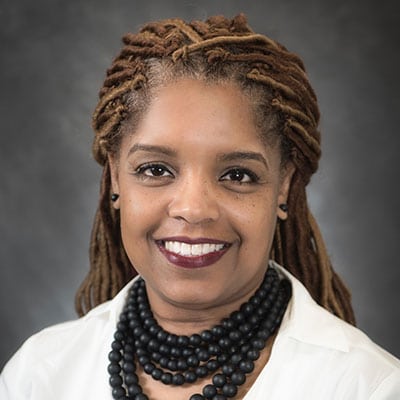
Jill English, director of Child Advocates’ Interrupting Racism for Children
Any work involving dismantling system racism must include a focus on children, as well as the acknowledgement that inequities impact everyone, according to Jill English, director of Child Advocates’ Interrupting Racism for Children (IRFC).
As part of her role with Child Advocates, English contributes to the organization’s mission to illuminate how systemic racism has become institutionalized in America and how it is passed on from one generation to the next. IRFC hosts a two-day, interactive workshop where individuals and leaders can learn how to confront racism. “We need to address the question, ‘How do we interrupt racism for our children since we haven’t been able to do it for one another?’,” English said.
When implementing policies to address systemic racism, organizations should engage in deep reflection and examination without an environment of shame, English said.
“We all need to acknowledge that it is embedded in our society. Oftentimes, this work has involved calling people out, shaming them, telling them what they do wrong, what they don’t get, or what they don’t know,” English said. “We need to come from a place of caring. I care more about children than being right. We focus on moving one another to a place where we can actually start interrupting racism and putting the tools we learn in the workshop into effect so we can change the trajectory of where we are today.”
English also said that the IRFC workshop is designed to help attendees understand the scope of racism’s impact on all demographics.
As an example, Child Advocates came to the realization that white children were also at a disadvantage because of racial biases. “If 70 percent of the child population in Marion County is white, for example, and only 46 percent of the children in Child Protective Services are white on any given day, where are all the white children who are being abused and neglected?” English asked.
“We need to see that we are allowing white children to get hurt or leaving them in dangerous situations for no other reason than that we don’t see it,” she added. “Just as we see abuse and neglect for the same situation in an African-American family, the same thing happens to a white child but we don’t see it because of our implicit biases. ‘White’ hides a lot of things. At the same time, too many African-American children are being removed from their homes. How do we help them?”
“We need to connect to an understanding that racism hurts everyone,” she said. “When it gets better for one population, it gets better for all when it’s done from an equitable lens.”
English said when organizations approach her about how to develop a strategic plan, she often encourages them to reflect on their own goals and mission. “The work of racial equity isn’t meant to be a check in a box … just for you to say it’s something you’ve done. It must be part of a journey,” she said.
She likened it to setting goals for a healthier lifestyle. “You don’t go to a gym, check it off a box and then 10 years later say I’m still working on my health,” English said. “In the same way, you can’t go to a cultural competency workshop and then expect to be done. It is an intentional daily practice similar to health. If you want to be healthy when it comes to racism, you have to figure out your organization’s goal and commit to it daily.”
English also said organizations may need to seek external help to hold them accountable in the work of diversity. “It’s hard to have a DEI (Diversity, Equity and Inclusion) within an organization and give them the responsibility to hold their colleagues accountable,” she said.
Ultimately, as part of its mission, Child Advocates is intent on creating a community that allows children to reach their full potential; in an environment where their outcomes are not based on their race, English said. “We want to create a world where that’s no longer on the table.”
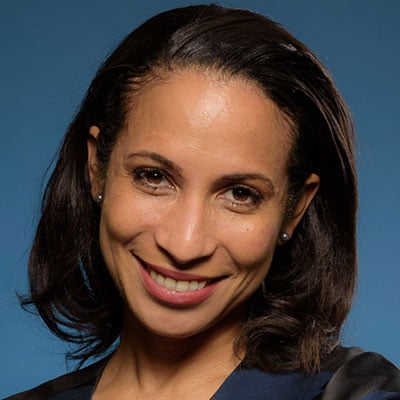
Una Osili, associate dean for research and international programs at Indiana University Lilly Family School of Philanthropy
The diversity among the millions of people who joined more than 10,600 protests this summer gave Una Osili and her family reason to hope that efforts to eradicate racism in America would be more successful — this time around.
“I’m optimistic,” said Osili, associate dean for research and international programs at Indiana University Lilly Family School of Philanthropy. “One of the reasons this moment is so different is that it involves such a broad-based group of individuals and organizations. What we saw with these protests and calls for racial justice didn’t involve just one racial group. A lot of different communities were represented as part of a grassroots effort.”
Her parents, who were college students during the social injustice protests of the 1960s, also expressed optimism about the mass demonstrations in 2020. “When they looked at footage around the country and around the world, they noticed that the crowds were so diverse,” said Osili, whose parents currently live in Nigeria. “It was inspiring. The call to action was not just coming from black and brown people. It was coming from people of all races and of all ages.”
Osili said intentional collaboration on a large scale, building upon the progress already made by nonprofit organizations immersed in social justice work, is the next step to real change.
“There was a lot of energy and vision that came from our young people,” Osili said. “It’s up to us to deepen the conversations. The questions now are, ‘How do you sustain and build on that progress for it to be a lasting movement?’ ‘What are our values? What do we stand for?’ All of us own a piece of that to a large extent.”
With such a large opportunity for change, Osili added, all sectors must come together to collaborate — government, education, nonprofit and businesses. “If you think about the scale of the work, no one organization can solve this on its own,” she said. “Collaboration is key, yet we haven’t done so well with that in the past.”
Osili said there have been recent developments in more collaborative approaches, citing the Central Indiana Racial Equity Fund as an example. The fund, a collaboration among Eli Lilly and Company Foundation, Lumina Foundation and Central Indiana Community Foundation, was established to address racial inequities in the criminal justice system. It also received contributions from Anthem Foundation, Buckingham Foundation, Dorsey Foundation, Rick Fuson and Karen Ferguson Fuson, Marianne Glick and Mike Woods, Glick Philanthropies, Herbert Simon Family Foundation, High Alpha, The Indianapolis Foundation, Indianapolis Power & Light Company, Lilly Endowment Inc., and Pacers Foundation.
“When organizations join forces, there can be tremendous gain and benefit,” said Osili, noting that nonprofits, including colleges and universities, can play a critical leadership role because of their previous experience and knowledge base.
While collaboration is critical, internal work also must be at the forefront of racial equity efforts, Osili said. Organizations can start by conducting an analysis of hiring practices, processes, assets, board composition and endowments from the perspective of inclusion and diversity, she said.
For example, research from the IU Lilly Family School of Philanthropy shows that nonprofit boards are less diverse than those of government and corporate boards, Osili said. “Nonprofits are doing well on the gender side; there’s good representation in terms of addressing gender in leadership,” she said. “When you start looking at race and ethnicity, including in areas you would expect more representation like the arts, environment and international, you don’t see good representation.”
Some organizations are addressing minority board representation in several innovative ways, Osili said. Board Connector, an organization based in Chattanooga, Tenn., has developed an app to help nonprofits reach their goals for diversity.
The Indianapolis Urban League, along with other Urban League chapters, sponsors a young leaders group that can be tapped for board membership, Osili said. “They’re ready to serve and are very knowledgeable,” she added. “Many organizations tend to go to the same people to join their boards. They’re inundated with requests.”
“At the same time, we also need to prepare young emerging leaders so they’re ready to serve,” Osili said. “It’s the responsibility of both the organization and the larger nonprofit infrastructure to provide readiness, to equip them with the tools to be successful.”
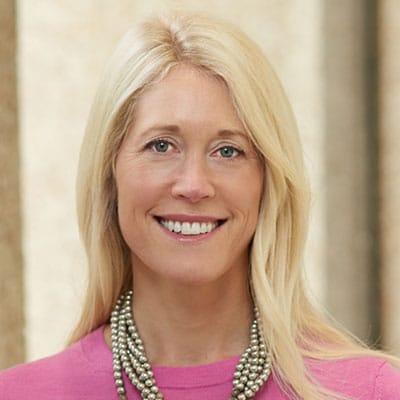
Lindsey Rabinowitch, director of the Faith & Action Project for Christian Theological Seminary (CTS)
As an increasing number of organizations lean in to address social justice and inequities, increasing awareness must be at the foundation of their efforts, said Lindsey Rabinowitch, director of the Faith & Action Project for Christian Theological Seminary (CTS).
“Part of the work involved in undoing racism is to make sure we are reading, studying and being aware of all the ways we have privilege, including systemic policies that often hold back minorities,” said Rabinowitch, who regularly reads to stay informed.
Organizations, whether congregations, businesses or nonprofits, also need to identify their niche as part of the larger work involved in eradicating racial inequities, she said. “Some of the questions can include, ‘How can we make sure everyone has access to quality education?’ ‘What is the situation of our community?”
While goals may be more clearly identifiable for businesses, such as addressing diversity hiring plans, nonprofits can commit to advocating for equity in numerous areas — from early and convenient voting to education and training for incarcerated populations, affordable childcare and accessible transportation, Rabinowitch said.
Among the critical areas CTS has sought to address through the Faith & Action Project is the disproportionate rate of poverty among Indianapolis residents, including children, when compared with the rest of the nation. According to recent statistics compiled by The Polis Center at IUPUI, one of five people in Central Indiana live under the poverty level. Minorities are among those most negatively impacted,
Rabinowitch noted.
“CTS always has been a very progressive organization with a mission of shaping individuals for leadership in efforts to mitigate poverty, and ensure equal opportunities and treatment for all people,” Rabinowitch said. “We believe all people deserve affordable quality housing, affordable health care and balanced nutrition that’s accessible. We help families move out of poverty and stand on their own. We want people to have a sense of belonging and the ability to experience upward mobility.”
Rabinowitch also advised organizations to shape their conversations by being more inclusive. “We need to change this narrative on poverty — it’s not ‘us’ vs. ‘them,’” she said. “We need to make sure we see each other. We belong to one another.”


